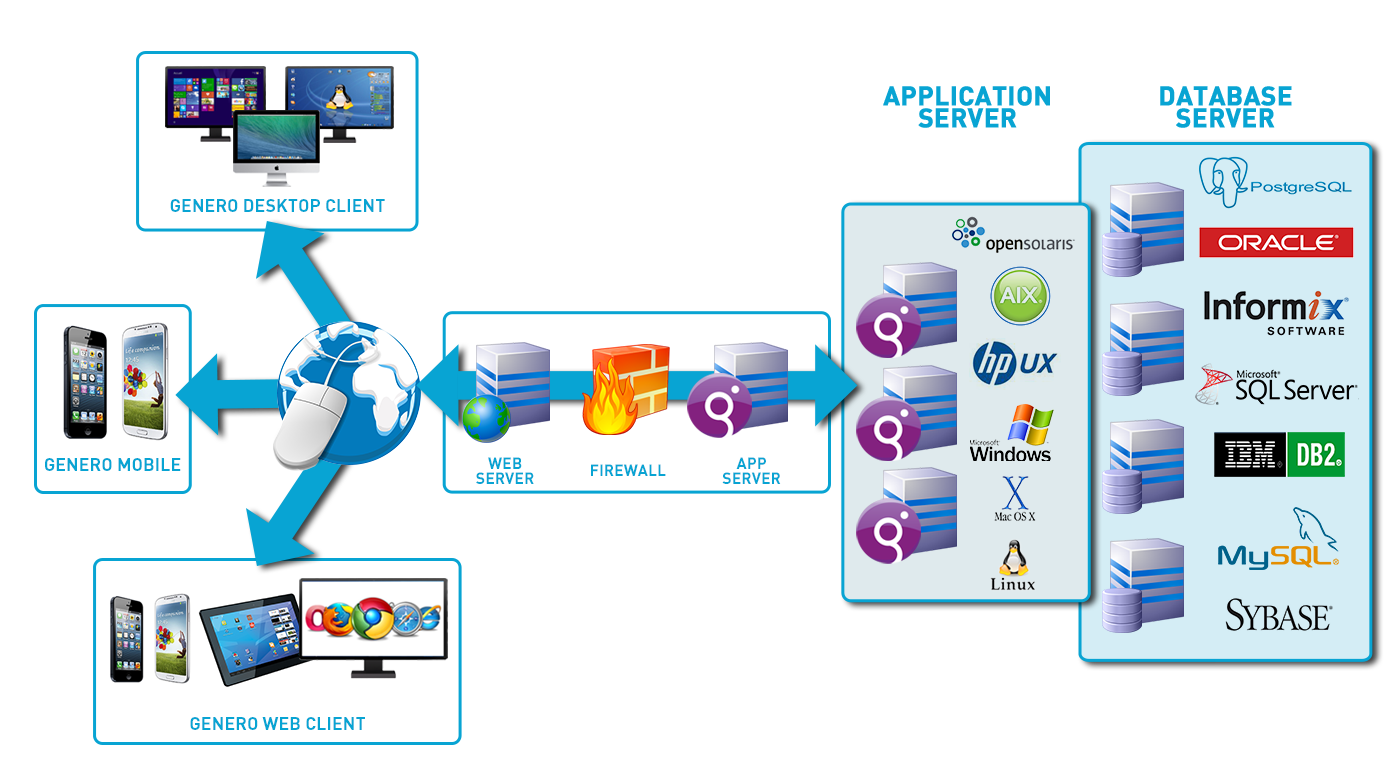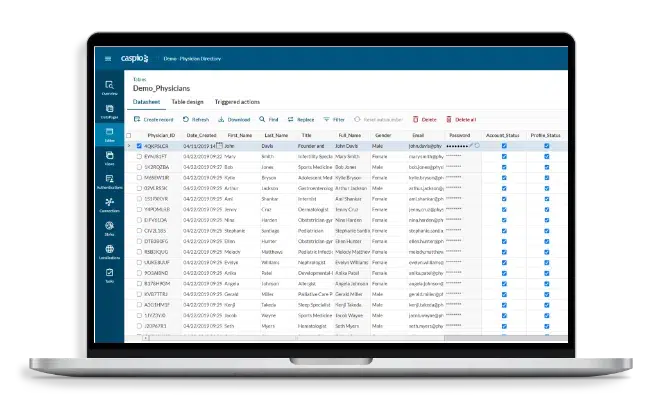Unlock the Power of No-Code for Open System Data Source Creation
Unlock the Power of No-Code for Open System Data Source Creation
Blog Article
Exploring the Benefits of Scalable Databases That Require No Coding Skills for Efficient Information Administration Solutions
The introduction of scalable data sources that get rid of the requirement for coding skills offers a transformative possibility for organizations looking for reliable data management services. By enabling non-technical customers to harness the power of data with instinctive user interfaces, these systems improve ease of access and foster cooperation across varied teams. Their cost-effectiveness and adaptability to progressing company needs can substantially streamline functional processes. As we take into consideration the ramifications of such advancements, it comes to be crucial to analyze just how they can reshape the landscape of data administration and drive sustainable growth in a competitive atmosphere.
Boosted Access for Individuals
Boosted availability for customers is a vital aspect of scalable data sources, guaranteeing that information administration systems are straightforward and user-friendly. In an era where data-driven decisions are vital, ease of access permits a larger range of individuals, including those without extensive technical experience, to engage with data source systems properly. This democratization of data accessibility helps with enhanced collaboration throughout divisions, empowering staff members to extract understandings and make notified choices.
User-friendly interfaces, such as drag-and-drop features and aesthetic data depiction, simplify intricate data communications. These enhancements lower the learning contour associated with standard database administration, allowing customers to concentrate on leveraging data rather than coming to grips with technical intricacies. Furthermore, scalable databases frequently incorporate real-time analytics and customizable dashboards, giving users with immediate understandings tailored to their specific needs.

Cost-Effectiveness and Resource Savings
Reliable information administration not only rests on accessibility yet likewise on cost-effectiveness and resource financial savings. Scalable data sources made for customers without coding abilities dramatically decrease financial burdens commonly linked with standard database management systems. By removing the requirement for specialized programs know-how, organizations can designate their sources much more effectively, focusing funds on core company activities rather than substantial training or working with skilled personnel.
Furthermore, these databases typically use cloud-based remedies, which even more decrease expenses associated to hardware and maintenance. Organizations can scale their data source solutions according to their demands, staying clear of the expenses incurred from over-provisioning sources. This versatility implies businesses can adjust to changing needs without sustaining unnecessary expenses, leading to significant long-term cost savings.
Furthermore, easy to use interfaces improve information entry and administration procedures, decreasing the time invested on management tasks. This efficiency equates into labor cost financial savings, permitting groups to concentrate on critical campaigns instead of routine maintenance. In general, adopting scalable data sources that need no coding abilities promotes a much more cost-efficient approach to data monitoring, allowing companies to maximize their sources while preserving high degrees of operational performance.
Improved Cooperation Across Teams

Additionally, scalable data sources facilitate smooth interaction among group participants. With easy to use interfaces that require no coding abilities, workers can conveniently produce, customize, and share records or control panels tailored to their certain needs. This democratization of data equips non-technical customers to contribute understandings, improving the collective setting.
In addition, these databases support simultaneous gain access to, allowing numerous individuals to service the same dataset concurrently. This attribute improves productivity, as groups can take part in joint data analysis without the risk of version control issues. The ability to leave notes or remarks straight within the data source better promotes discussion and clarifies data analyses.
Streamlined Information Monitoring Processes
In today's data-driven atmosphere, organizations recognize the necessity of structured information administration processes to make the most of efficiency and precision. By leveraging scalable data sources that need no coding skills, companies can streamline their information handling and lower the intricacies typically connected with traditional data source systems. This accessibility empowers non-technical users to involve straight with information, facilitating quicker decision-making and reducing reliance on specialized IT workers.
Structured data management procedures boost process by automating try here regular tasks such as information access, validation, and reporting. Automated data combination makes sure that info from numerous sources is accumulated effortlessly, getting rid of silos and promoting a merged sight of important service metrics (no-code). Moreover, easy to use interfaces permit employees to adjust data quickly, enabling them to generate understandings that drive critical campaigns without the demand for considerable training.
This efficiency not just increases functional processes but additionally decreases the capacity for human mistake, ensuring that data remains exact and reliable. Ultimately, streamlined data monitoring procedures through scalable databases result in enhanced productivity, enabling organizations to focus on core tasks while making certain that their information monitoring methods are efficient and reliable.
Scalability for Growing Organizations

For expanding enterprises, the capability to scale up or down is check over here important. A scalable database can deal with an increase of information generated from new clients, products, or services, guaranteeing that service procedures stay nonstop. In addition, these data sources provide the ability to manage peak loads efficiently, which is necessary during durations of fast growth or seasonal spikes.
In addition, Discover More Here lots of scalable database services are made with easy to use user interfaces that need no coding skills, encouraging non-technical staff to take care of data properly (no-code). This democratization of data monitoring allows companies to allocate sources purposefully and decrease dependence on specialized IT workers
Inevitably, adopting a scalable data source not only improves functional efficiency however additionally fosters an atmosphere where businesses can develop and introduce without the constraints of standard database systems. This versatility positions organizations for long-term success in today's competitive landscape.
Verdict
Finally, scalable databases that call for no coding abilities offer considerable advantages for effective information management. These systems improve ease of access for non-technical customers, reduce operational expenses, and advertise partnership throughout groups. By streamlining data administration procedures and offering scalability for growing organizations, such services enable organizations to adapt to transforming demands successfully. Ultimately, the adoption of these straightforward databases fosters technology and settings services for lasting success in a vibrant environment.
Improved access for customers is an essential facet of scalable data sources, making certain that data management systems are straightforward and instinctive.Straightforward user interfaces, such as visual data and drag-and-drop features representation, streamline intricate information interactions. In general, adopting scalable data sources that require no coding abilities promotes a much more economical technique to information management, enabling companies to maximize their resources while maintaining high degrees of operational performance.
By leveraging scalable data sources that need no coding skills, organizations can streamline their data handling and reduce the intricacies usually associated with standard data source systems - no-code.Streamlined information administration procedures enhance operations by automating routine jobs such as data entrance, validation, and coverage
Report this page